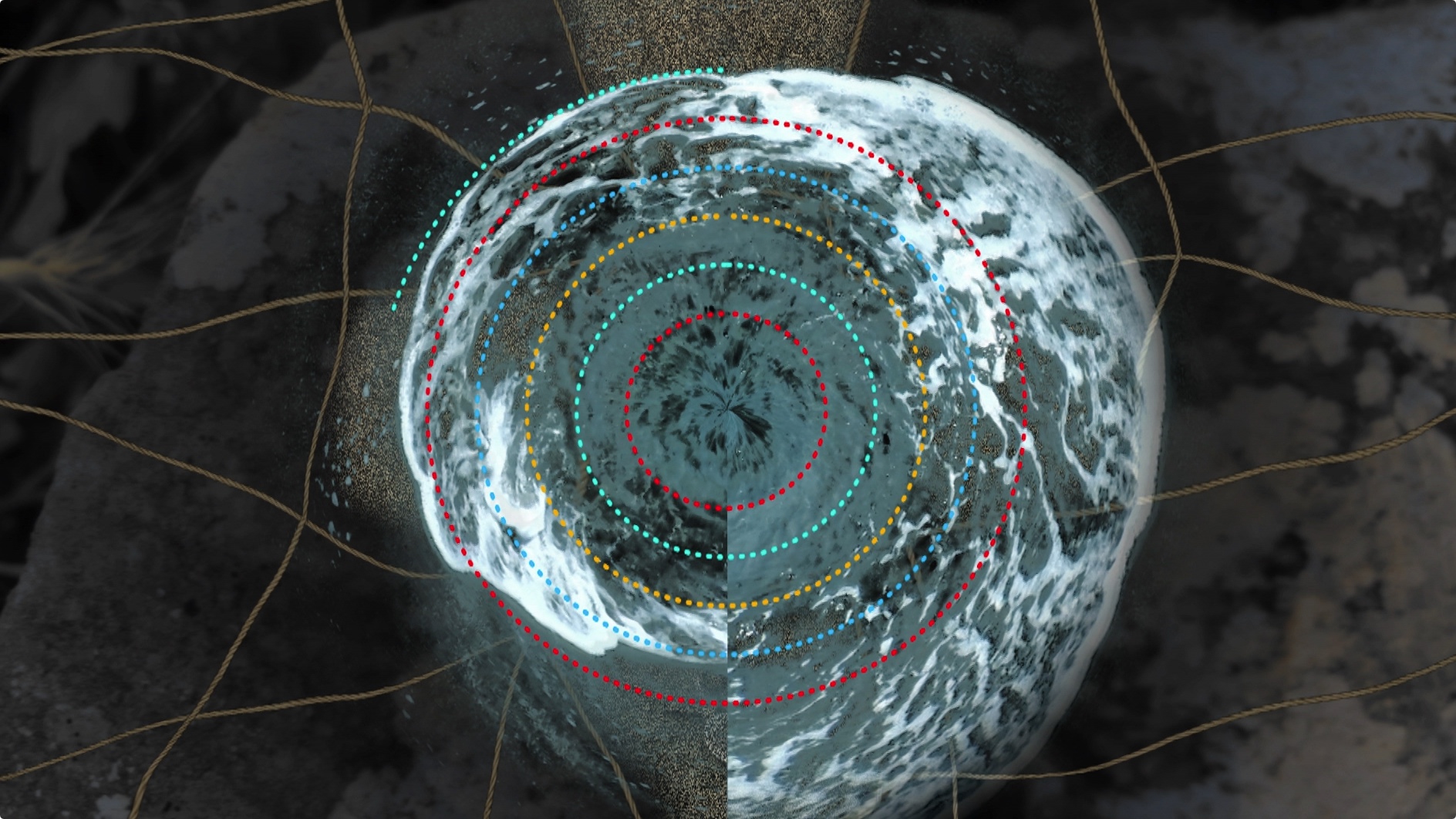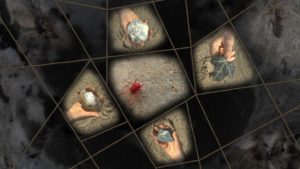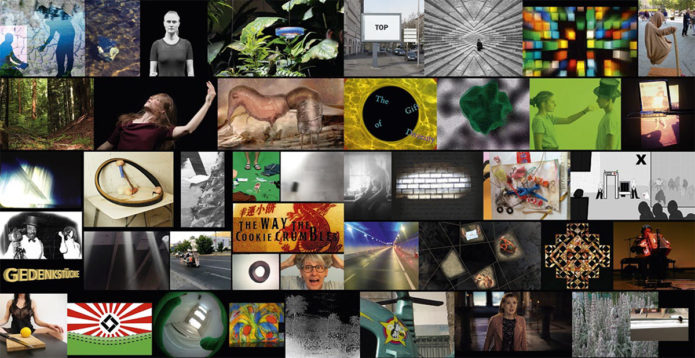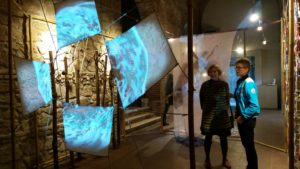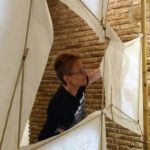Eine neue Installation im Songlines Projekt, von 9. Oktober bis 1. November 2020, in der Ausstellung Wild and Connected Plus, Galerie VBK, Berlin.
Video der Ausstellungseröffnung:
In dieser Arbeit kombiniere ich neuere und ältere Werke. Inspiriert von den „Songlines“ der australischen Ureinwohner versuche ich, die Geburt des Individuums wieder mit dem Ursprung des Lebens zu verbinden. Entlang eines Netzes von Wegen, Zeichen und Erinnerungen finden wir unseren Platz in der Natur wieder.
… dem Labyrinth unsichtbarer Wege, die sich durch ganz Australien schlängeln und die Europäern als “Traumpfade” oder “Songlines” und den Aborigines als “Fußspuren der Ahnen” oder “Weg des Gesetzes” bekannt sind. Schöpfungsmythen der Aborigines berichten von den legendären totemistischen Wesen, die einst in der Traumzeit über den Kontinent wanderten und singend alles benannten, was ihte Wege kreuzte – Vögel, Tiere, Pflanzen, Felsen, Wasserlöcher -, und so die Welt ins Dasein sangen.
(Bruce Chatwin, Traumpfade (The Songlines), 1987)
In der Kultur der australischen Ureinwohner spielen die langen Wanderungen in der Wüste von Personen, die den Walkabout* (wie von Bruce Chatwin in „The Songlines“ („Traumpfade“), 1987, erwähnt) unternehmen, eine wesentliche Rolle, um den Kontakt und den Austausch von Ressourcen (sowohl materieller als auch spiritueller Art) zwischen Bevölkerungen zu ermöglichen, die durch enorme Entfernungen voneinander getrennt sind. Bei meiner Arbeit habe ich mich von der Idee der australischen Ureinwohner leiten lassen, ein „Territorium“ nicht als ein festgelegtes Stück Land zu sehen, sondern als ein dynamisches Netz von Pfaden, Wegen und Liedern – von Chatwin so gut beschrieben.
Durch Anklicken der Bilder unten kann man die bisherigen Arbeiten sehen und mehr über das Songlines-Projekt erfahren.






